
 |
|
|
|
|
#1 |
|
Member
Join Date: Jan 2006
Location: Kent
Posts: 2,653
|
I couldn't 'resist' these.
Recently purchased these from America, originally bought and owned by the sellers Grandfather. Whom bought them from an importer based in New York in the '40's. Nice little items, nicely forged .... and interesting. Would anyone know if the description of these originating from the Pygmy tribes of the Congo would be accurate or likely. The 'hand' picture gives you a good guide to the size.. they look like spearheads of the Lilliputians, interesting to see things from Gulliver's perspective.  All comments gratefully received. Regards David |
|
|

|
|
|
#2 |
|
(deceased)
Join Date: Dec 2004
Location: Portugal
Posts: 9,694
|
Hi David,
Obviously not crossbow bolts ?  Congo ( and not only) Pygmies used (still use?) such devices. Sorry, just my fantasy  Fernando |
|
|

|
|
|
#3 |
|
Member
Join Date: Jan 2006
Location: Kent
Posts: 2,653
|
Hi Fernando
 , ,these are definately arrow heads. Many African arrows are made in 4 parts, the fletchings, the main shaft to which a thinner shaft is attached, it is this thinner shaft that the arrow head is fixed. When an animal or human is struck with an arrow, the 'instinct' is to remove it quickly, 4 legged animals will try to dislodge the arrow by rubbing against trees or rocks often the thin shaft breaks leaving the arrow head still embedded in the wound.(this is the reason for the thinner, weaker section.) Nearly all African arrow heads are dipped or wiped in poison. Unlike most other 'hunting' arrows which are much larger and are used to kill the animal by hitting main arteries or vunerable areas. African's rely on the animal being poisoned, larger animals may take some time to die,(the amount of toxin to 'body weight' ratio) and the tribesman can spend a whole day tracking the 'wounded' animal until it finally dies or is too weak to escape. African bows tend not to have a high 'draw weight' (the amount of force required to draw the bow) this means they are unable to propel heavy broadheaded arrows with any real speed or penetrative 'power'. Whether this is due to the qualities of the wood available (in Africa) to make bows or due to the terrain etc that mean't that poison arrows were preferred....I do not know. Regards David |
|
|

|
|
|
#4 |
|
Member
Join Date: Jan 2008
Posts: 1,430
|
Hi
Very interesting, especially with the old documentation. There's a book just come out on African bows and arrows, called "Ata Epe" by Hendrik Wiethase. Its in German, but has lots of very useful photos and illustrations. Regards |
|
|

|
|
|
#5 |
|
Member
Join Date: Dec 2004
Location: Sint-Amandsberg (near Ghent, Belgium)
Posts: 830
|
Here are a couple of complete Pygmee arrows. The shafts are made of some kind of light wood. The feathering is done by using dried leaves. The biggest one measures about 50 cm.
I believe these arrows were coated with some kind of poison. If you hit something, they would 'stick' but otherwise do very little damage (as they are so lightweight). When fastworking poison is used, then they can become lethal (at least to bird and/or monkeys). 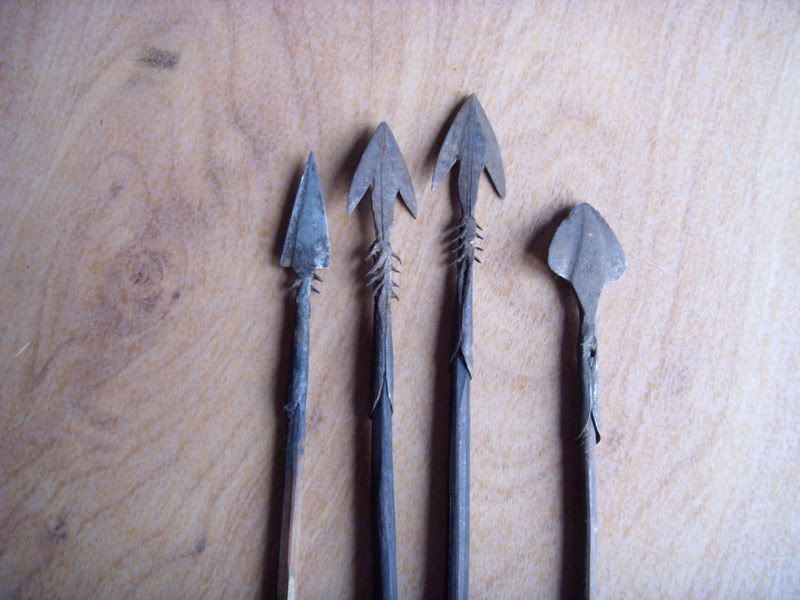 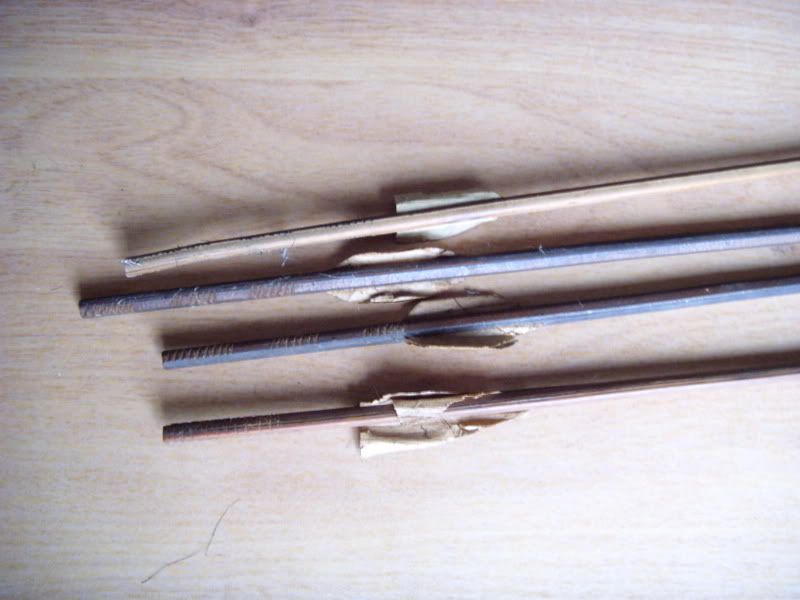
|
|
|

|
|
|
#6 |
|
Member
Join Date: Dec 2004
Location: Sint-Amandsberg (near Ghent, Belgium)
Posts: 830
|
I forgot to mention : the arrowheads measure between 5,5 cm and 7 cm.
I've added some pictures of a Pygmee bow. Typical of these are the animal tail at one of the extremities. This bow measures 70 cm from tip to tip. It has a rattan string, some animal skin and has iron binding. 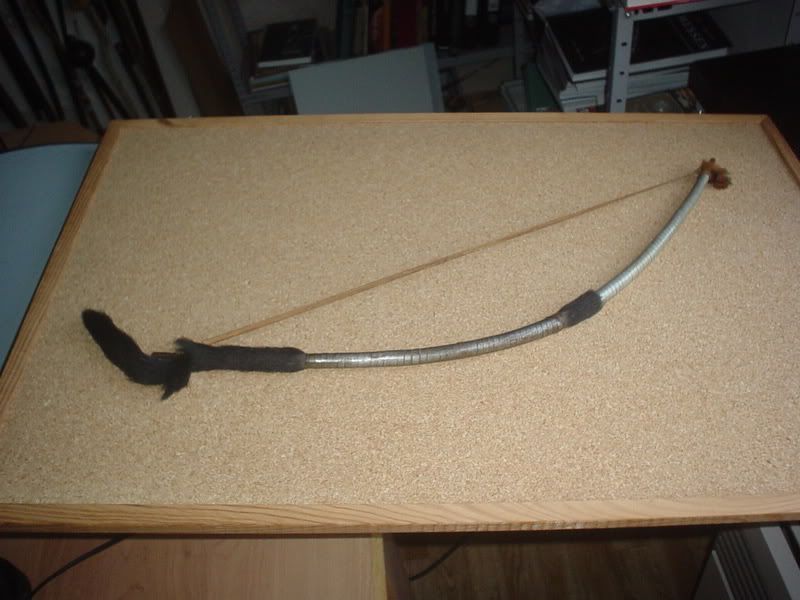 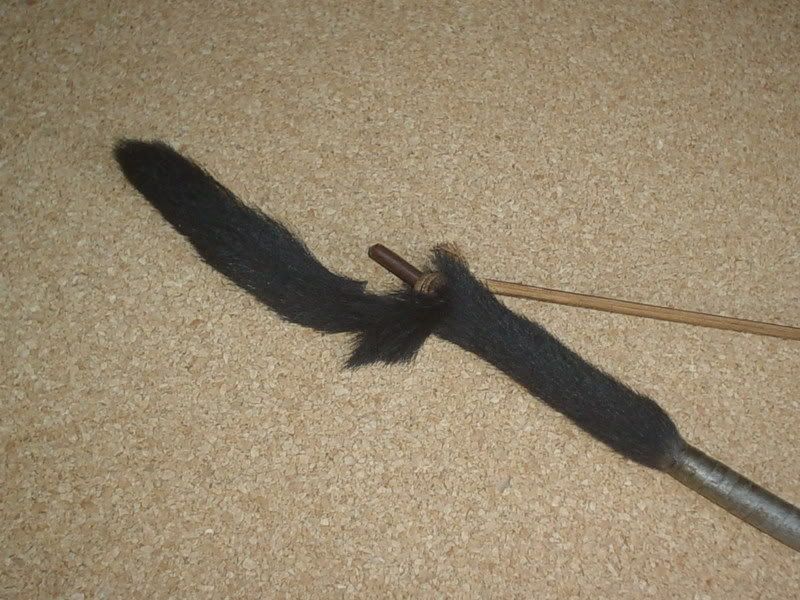 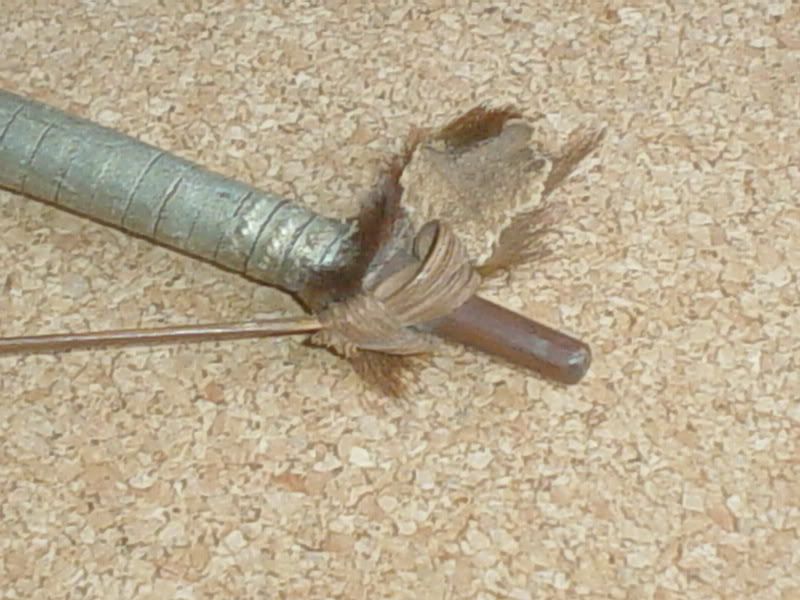
|
|
|

|
|
|
#7 |
|
Member
Join Date: Jan 2006
Location: Kent
Posts: 2,653
|
Hi Colin and Freddy
 , ,I agree Colin even more interesting with the 'old documentation'....a piece of history in 'itself'. Thank you Freddy with your input, very nice arrows, although most arrows I have seen / read about are constructed with a main shaft and a thinner shaft to which the arrow head is fitted. The arrow heads on yours suggest they were used on larger game, the barbs preventing the animal removing them before the poison had taken effect. Mine being 'barbless' were probably for small game where the effect of the penetration of the arrow is more effective in killing / maiming the animal ...with perhaps poison ..to make sure. Kind Regards David |
|
|

|
|
|
#8 |
|
Member
Join Date: May 2008
Posts: 26
|
Freddys arrows is from the Mangbetu region. The pygmees did not work with metal, but traded for metal implements from neighbouring peoples.
Freddy: if you check the marks on the arrowshafts it is a high probability they correspond with the shape of the arrowhead, atlest they do on most I have examined. The quiver was open at the top so the marks helped chosing the right arrow in a full quiver. |
|
|

|
 |
|
|